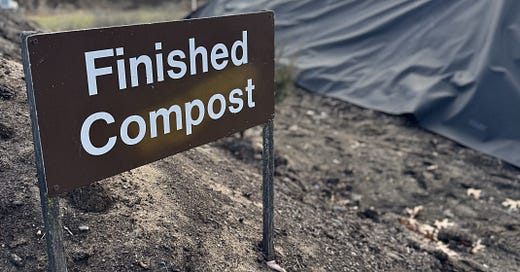In a sustainable society, what facts and ideas would be “common knowledge?” In posts like this one, I’ll share lessons we can all learn from.
Pull into the lane at Clay Bottom Farm, a small, family-run vegetable farm in Goshen, Indiana, and straight ahead you will see two big piles, each as tall as me and 50 feet long. Under the heavy tarps covering the piles are decaying leaves waiting to feed the garden’s soil.
Those leaves, raked from yards in Goshen and delivered by the municipality each fall, are a crucial part of the farm system: they replenish the nutrients that are harvested from the garden to feed Goshen residents and they feed the soil biology what it needs to thrive: carbon.
Soil is an ecosystem–a community of fungi, bacteria, archaea, earthworms, and other life forms all doing the work of decomposing materials and providing plants with what they need to grow. Soil organisms break down dead plants, rocks, and other materials into forms that plants can use. Fungi form networks of mycelia that help plants communicate with each other and transport nutrients over long distances. And archaea help fix nitrogen in the soil, providing fertility for plant growth. To carry out all these tasks, soil organisms need energy in the form of carbon.
Keep reading with a 7-day free trial
Subscribe to Sierra's Adventures in Sustainability to keep reading this post and get 7 days of free access to the full post archives.




